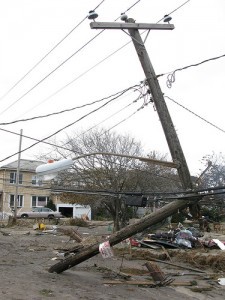Rebuilding After the Storm

As much as I was happy to help homeowners in The Rockaways this weekend, one persistent thought came to mind as I filled garbage bags with debris and dragged them out to the curb: We braced for Irene last year, and survived relatively unscathed. Sandy came this year and the destruction was devastating. What about next year? Or the year after that? Or 10 years from now? It would be naive to think that Sandy was an outlier, and that another big storm won’t happen again. A coastal community like The Rockaways would certainly be vulnerable when the next one comes around. How much sense does it make to rebuild everything?
I’m sure this is a question that the residents of Florida get often whenever hurricane season rolls around. The homeowners I spoke with said that they had lived in the community for years, and that they wouldn’t abandon the place they called home. This weekend, the Times looked at Dauphin Island in Alabama which has been perpetually hit by devastating storms in the past three decades, and the millions of dollars the federal government has put into rebuilding the Dauphin community when it’d be much better to convince people that it’s too dangerous to continue living on the island:
Dauphin Island is a case study in the way the federal subsidies have enabled repetitive risk taking. Orrin H. Pilkey, an emeritus professor at Duke University who is renowned for his research in costal zones, described the situation here as a “scandal.”
Dauphine Island has accepted lots of money through the federal government through the Stafford Act, “a federal law that taps the United States Treasury for 75 percent or more of the cost of fixing storm-damaged infrastructure, like roads and utilities.”
One alternative is to buy out the property owners in vulnerable areas and convince them to move (“Entire towns were moved out of the Mississippi River flood plain in the 1990s, for instance, saving money over the long haul.”) That can take years to do, and people are willing to weather the bad times. “Hopefully this won’t happen again and we’ll be better prepared next time,” a homeowner told me. Hopefully, he’s right.
Photo: Dakine Kane
Support The Billfold
The Billfold continues to exist thanks to support from our readers. Help us continue to do our work by making a monthly pledge on Patreon or a one-time-only contribution through PayPal.
Comments